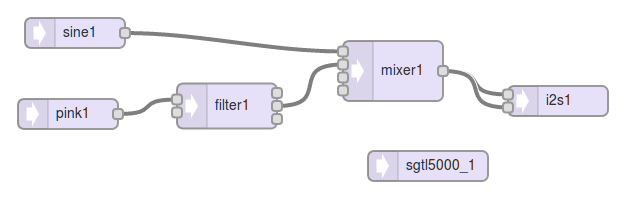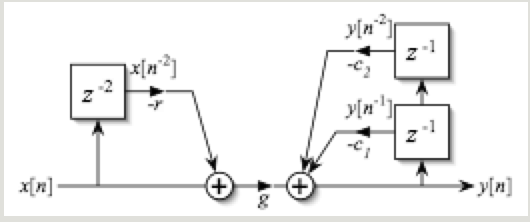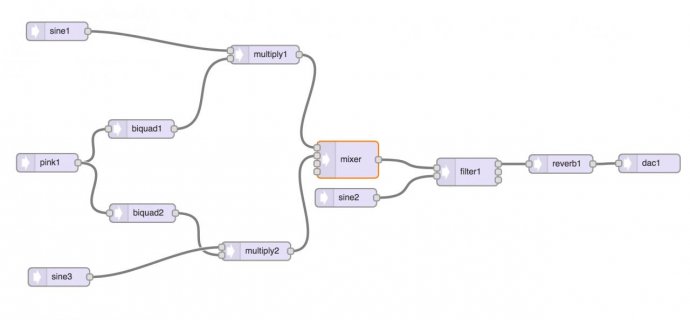Hi there,
I'm working on an audiovisual installation; something about icebergs and the sound of the wind on them. I need to use teensy as it is interactive, to create the sound. Unfortunately, I'm not really used to create sounds with the Audi Library. So I may need you help. I've made a patch max of the idea of the sound I'm trying to create... (quite easy, in fact, as you can see).
The main idea is to multiply a 800 Hz sinusoidal oscillator with another signal composed from a random signal ( rand~ 225 ) or a pink signal sent to a resonant bypass filter ( reson~ 1. 100 100 ). See the screenshot of the patch Max bellow, and you can listen to the result here: https://www.dropbox.com/s/gsc85m8nvltjh5b/snd_extract_01.aiff?dl=0

Is there an equivalent to the resonant bypass filter in the Teensy Audio Library ?
Thank you in advance for your help !
Bellow, the code of the max patch, if needed.
I'm working on an audiovisual installation; something about icebergs and the sound of the wind on them. I need to use teensy as it is interactive, to create the sound. Unfortunately, I'm not really used to create sounds with the Audi Library. So I may need you help. I've made a patch max of the idea of the sound I'm trying to create... (quite easy, in fact, as you can see).
The main idea is to multiply a 800 Hz sinusoidal oscillator with another signal composed from a random signal ( rand~ 225 ) or a pink signal sent to a resonant bypass filter ( reson~ 1. 100 100 ). See the screenshot of the patch Max bellow, and you can listen to the result here: https://www.dropbox.com/s/gsc85m8nvltjh5b/snd_extract_01.aiff?dl=0

Is there an equivalent to the resonant bypass filter in the Teensy Audio Library ?
Thank you in advance for your help !
Bellow, the code of the max patch, if needed.
Code:
<pre><code>
----------begin_max5_patcher----------
440.3ocyT00SCCBE841eEDdzTWJztOz272gwXvVbhoCZ.5beD2ucgKsyM2zM
cKY9PogKG3bOGtWVFGgeRMiavnaQ2ihhVFGEAg7AhZmGgmvlUTwL.LLeQIqX
ENIrTMyV7hPN9QMuvFNl7g8RSPzQo9e486FQOztEQIbNpmd8ZR2wHalnZrUb
KvQZaTicdEG.uANgrCF0G683X+PxQl8R9aNh6NNKeFjzXM2njqPjdHRZp+6G
zGIi30zng85mfHjAfZy1PfOqjViXAj4D2B6pa5M3MvJYSBp7NsfUseKgzFMD
xNulGRFrQLV51zZxOfmke97rqNbQ.IXRYT+Hk9cdDcedTV5kxiNm0ULY4Jmx
6e35ov3.ne42ZUjKkUQNeVUw7hJ9Jzner2KTV0ZUi9KVE8+PUErGbkP90mdA
I6ius+YTM5hNd6ZNPep6RtwJjLqPI2.jqp.QViQoK4Z3008dmc1YNcWlImDy
9GMOHyP54D8ooQxQvTW5bZLQOVMsMSgBHVc8Tt1zhFHw0p8pBL6gIvTgLLMC
lp4SEc3ygHLsqGy5ZvZzgh2YCxwgspbWaxFQ6Mmi42i+.n6AeGN
-----------end_max5_patcher-----------
</code></pre>
Last edited:




